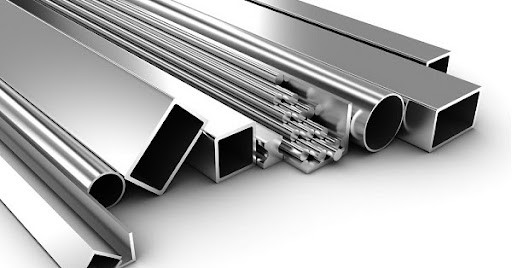What is Stainless Steel?
Iron is a very soft element. By adding up to 2% of carbon to it, incredible strength, hardness and mechanical properties are obtained, which is now called steel. The use of steel is also very common due to the abundance of iron and its easy and cheap availability. But steel also has a weak spot, which is in iron. Rusting, in other words oxidation. Rusting is an oxidation.
Oxidation is the combination of an element with oxygen. As a result of the combination of all elements in nature with oxygen, corrosion occurs on the surface of the element. This corrosion forms a very thin layer on the surface of the element, as soon as this layer is formed, it plays a protective role by cutting off the contact of the material with the air and prevents the progression of rust, this layer is so thin that the color of the material hardly changes, but the same is the case with the element iron. is not.
Due to the great difference in the sizes of the iron and oxygen atoms, the inability to have a solid bond on the surface, along with the penetration of rusting into the iron, over time eliminates all the strength of the element.
Due to the closeness of the chromium atom sizes, they combine with oxygen very easily and quickly. They form a very thin but very solid layer, only a few atoms thick. There is no other reaction. Even if this layer is damaged, it reappears. If chromium is added to the steel at a certain rate, the same thing happens, the steel will no longer rust. Stainless steel is obtained with a chromium alloy of more than 10% to the steel consisting of a mixture of iron and carbon.
ADVANTAGES OF STAINLESS STEEL
Ease of manufacture Almost all stainless steels can be easily formed by cutting, welding, hot and cold forming and machining processes.
MECHANICAL STRENGTH
The majority of stainless steels are strengthened by cold forming, and thanks to the increase in strength, material thicknesses in designs can be reduced, resulting in significant reductions in part weight and price. In some species, it is possible to give a very high strength to the material by heat treatments.
APPEARANCE:
Stainless steels are available in many different surface qualities. The appearance and quality of these surfaces can be easily maintained for a long time since they are easy to maintain.
HYGIENIC FEATURE:
The easy cleanability of stainless steel makes these materials widely used in hospitals, kitchens, food and pharmaceutical industries.
LONG LIFE:
Since stainless steels are durable and easy-to-maintain materials, they are economical materials considering the entire lifetime of the produced part.
Stainless steel is an ideal corrosion-resistant material, there are variant grades of stainless steel, the most common stainless steel grades are 304L and 316L.
There is no visible difference between 304L and 316L stainless steel, both are polished or grained the exact same way, you differentiate between them just by looking at them.
What is the quality of 304 stainless steel? What are its features?
304 grade stainless steels are the most widely used grade among stainless steels. 304 grade stainless steels are among the most preferred stainless steel grades in the market due to their corrosion resistance, easy formability, weldability and mechanical properties. Stainless steel manufacturers attach importance to the production of 304 quality stainless steel due to its ease of production and superior properties for its price. Thanks to these features, stainless steel manufacturers produce more intensively.
304 quality stainless steel contains 18-20% chromium, 8-10% nickel, 2% manganese, 0.08% carbon.
304 Quality Stainless Steel Usage Areas:
304 grade, which is one of the most common stainless steel grades; It is used in the automotive industry, household appliances, chemical industry and petrochemical industries, food industry and many other sectors. The most important reason why 304 quality stainless steel is used so widely is its features compared to its price. 304 quality stainless steel is widely used, especially in the chemical industry and food industry, as a raw material.
What are the Properties of 304 Quality Stainless Steel?
304 grade stainless steels have excellent corrosion resistance in daily use. It is suitable for use in different fields in many sectors. It can be used in food production facilities, architectural projects, construction applications, organic and chemical paint applications. In very harsh corrosive environments, 304 quality stainless steels may be insufficient. In these cases, 316 grade stainless steel can be used.
What are the Mechanical Properties of 304 Quality Stainless Steel?
Although 304 quality stainless steels are often sufficient in terms of mechanical strength, they are not preferred where high yield and rupture strength is required. Grade 304 stainless steel can be hardened by cold rolling like other austenitic steels. After cold rolling, 304 grade stainless steels can acquire significant magnetic properties.
Stainless steel producers provide the production of 304 quality stainless steel to different sectors as it has very good formability. It can be used in deep drawing applications without the need for intermediate softening with extra heat treatment. Thanks to this feature, stainless manufacturers produce 304 quality stainless steel for the sectors that are frequently preferred in the production of kitchenware such as pots and pans. It can also be used in different areas by being easily cut and converted into other part shapes. In addition, since it is suitable for welding, all standard welding techniques can be applied in production.
316 Stainless Steel and Its Usage Areas:
The difference between stainless steel 304 and 316 is usually due to the areas of use. These steels, which have similar mechanical properties, differ in their nickel and chromium ratios.
316 stainless steels consist of 16% chromium and 10% nickel. In addition, it contains 2% molybdenum. Among the most distinctive features of 316 quality stainless steels is the extra corrosion resistance provided by molybdenum. It also has resistance to high temperatures.

What are the Features of 316 L Stainless Steel?
The difference between 316 L stainless steels and classic 316 grades is that they contain lower carbon. In particular, the intergranular corrosion resistance is extremely high. 316 L stainless steels, which have superior resistance to high temperatures, offer different functionalities according to their usage areas.
As Karaca Stainless, we bring 304 and 316 quality stainless steels, which we offer to your service, with high production standards. You can reach the best quality stainless steel products within the scope of high quality and reasonable price advantage. You can turn your route to Karaca Stainless within the scope of the products required for your project. While providing professional solutions to your needs at all times, we serve with the focus of reliability and satisfaction.
The difference between 304 and 316 is judged on the basis of corrosion resistance:
Therefore, it appeals to different usage areas:
316 stainless steel stands out with its low carbon feature. 316 L steels, one of its varieties, show superior performance in terms of weldability. Thus, it is easy to use and saves time. 316 stainless steels, which have extremely high pitting corrosion resistance, transform into a more resistant form against temperature within the scope of Mo addition. It provides maximum durability compared to 304 quality.
316 stainless steels have a wide place in terms of usage areas. This product is highly needed, especially in seawater installations. Equipment used in chemicals and steels used in the food industry are also 316 quality. 316 stainless steel products with high tensile strength are frequently preferred in the paper and paint industry. It is also used in fields such as acetic acid and fertilizer.
316 quality stainless steels; It is also widely used in rods, ropes and bolts. In addition, it is needed in seaside constructions within the scope of its durability.
Chemical differences between 304L and 316L stainless steel:
From a chemical point of view, 304 stainless steel contains 18% chromium and 8% nickel while 316 stainless steel contains 16% chromium, 10% nickel and 2% molybdenum. The molybdenum is added to help resist corrosion.
Common applications of 304L stainless steel:
304L stainless steel is the most common form of stainless steel, it’s durability makes 304L easy to sanitize, and therefore ideal for kitchen and food applications.
It’s also used in auto molding and trim, wheel covers, hose clamps, exhaust manifolds, stainless hardware, storage tanks, pressure vessels, and piping.
One of the cons of using 304L stainless steel is that it’s susceptible to corrosion from chloride solutions, so it’s better to use 316L stainless steel in filling machines if the product could cause a chemical interaction with the metal.
Common applications of 316L stainless steel:
316L grade is the second-most common form of stainless steel 316L stainless steel is commonly used in many industrial applications involving processing chemicals, so usually filing machines that deal with chemicals are made of 316L stainless steel.
To view a previous article about carob, an Egyptian juice with many health benefits, click on the following link:
https://cubii.co/en/carob-syrup-poor-natural-pharmacy-know-its-benefits/
To see the CUBII orange juice filling machine work with a very high filling accuracy, click on the following link:
http://https://www.youtube.com/watch?v=gpBtNR2-qno





